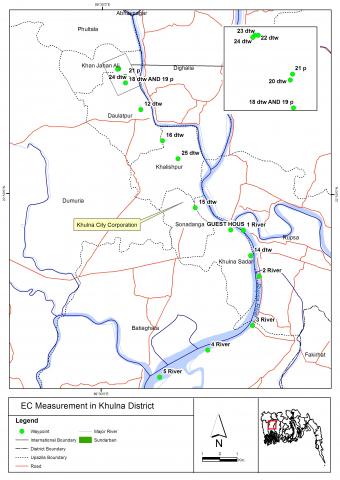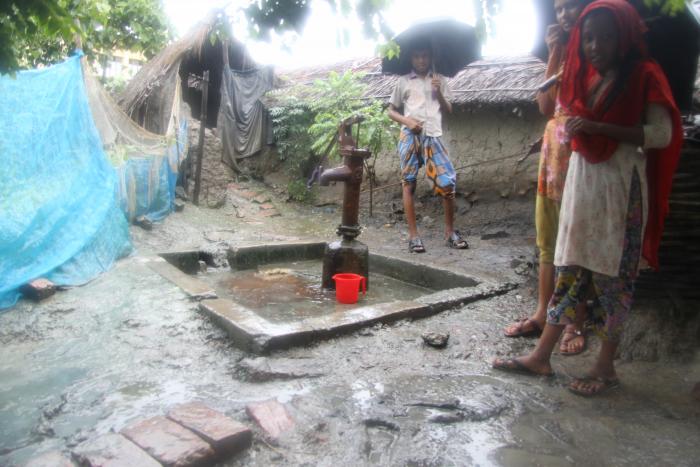Published on: 20/09/2013
During June and July 2013, Jan Snel, a student of the Utrecht University and intern at Deltares, went to Bangladesh for the project SWIBANGLA. In collaboration with CEGIS, his goal was to establish the first contacts with the stakeholders (such as BRAC and DPHE) and collect data about the hydrological and hydrogeological system in Bangladesh.
 During his stay in Dhaka, Jan also helped organise the Fact Finding Mission. This is one of the three missions scheduled in Bangladesh for the SWIBANGLA project. The other two missions are the Monitoring and Feedback Mission, which will take place at the beginning of next year, and the Dissemination Mission that will take place at the end of the project.
During his stay in Dhaka, Jan also helped organise the Fact Finding Mission. This is one of the three missions scheduled in Bangladesh for the SWIBANGLA project. The other two missions are the Monitoring and Feedback Mission, which will take place at the beginning of next year, and the Dissemination Mission that will take place at the end of the project.
The measurements taken during the field trips, together with the data provided by CEGIS and other available reports, are being used to understand how the groundwater system works in this area.
The Fact Finding Mission was held from the 6th to the 10th of July of this year. It included a kick-off meeting (see blog post of 8 July), an Inception Workshop, visits to a selection of key institutions and important stakeholders, and field visits to saline areas in the central coastal plain of Bangladesh. The goal of this mission was to gain first-hand experience to understand the salinity problems from a groundwater perspective in the coastal area of Bangladesh.
 Some of the main outcomes of the Fact Finding Mission were the following: 1) The salinity issue was recognised by the workshop participants as an important issue; 2) Although the impact of salt water intrusion on agriculture was seen as an important issue, within this project the focus was set on the drinking water sector; and 3) The southwest coastal area (Khulna) was chosen as the study area for the project.
Some of the main outcomes of the Fact Finding Mission were the following: 1) The salinity issue was recognised by the workshop participants as an important issue; 2) Although the impact of salt water intrusion on agriculture was seen as an important issue, within this project the focus was set on the drinking water sector; and 3) The southwest coastal area (Khulna) was chosen as the study area for the project.
During the Fact Finding Mission we organised a field trip to get the first measurements on water salinity. Afterwards, at the end of July, Jan Snel organised another field trip to the study area. He collected samples in deep and shallow tube wells, deep wells, ponds and rivers.
The measurements taken during the field trips, together with the data provided by CEGIS and other available reports, are at this moment being used to understand how the groundwater system works in this area. Parallel to the data analysis, Deltares started building up the groundwater model that will simulate the regional groundwater and salinity processes. This model will help answering questions such us: where is the fresh-saline interface? How will it evolve in the following years? What is the effect of the extractions in the vertical distribution of the salinity? Where are the critical points for monitoring?

Managing Saltwater Intrusion Impacts in Bangladesh (SWIBANGLA) is one of six DGIS-funded applied research projects being implemented in the BRAC WASH II programme. SWIBANGLA aims to make the salinization issue an integral part of water safety planning in Bangladesh.